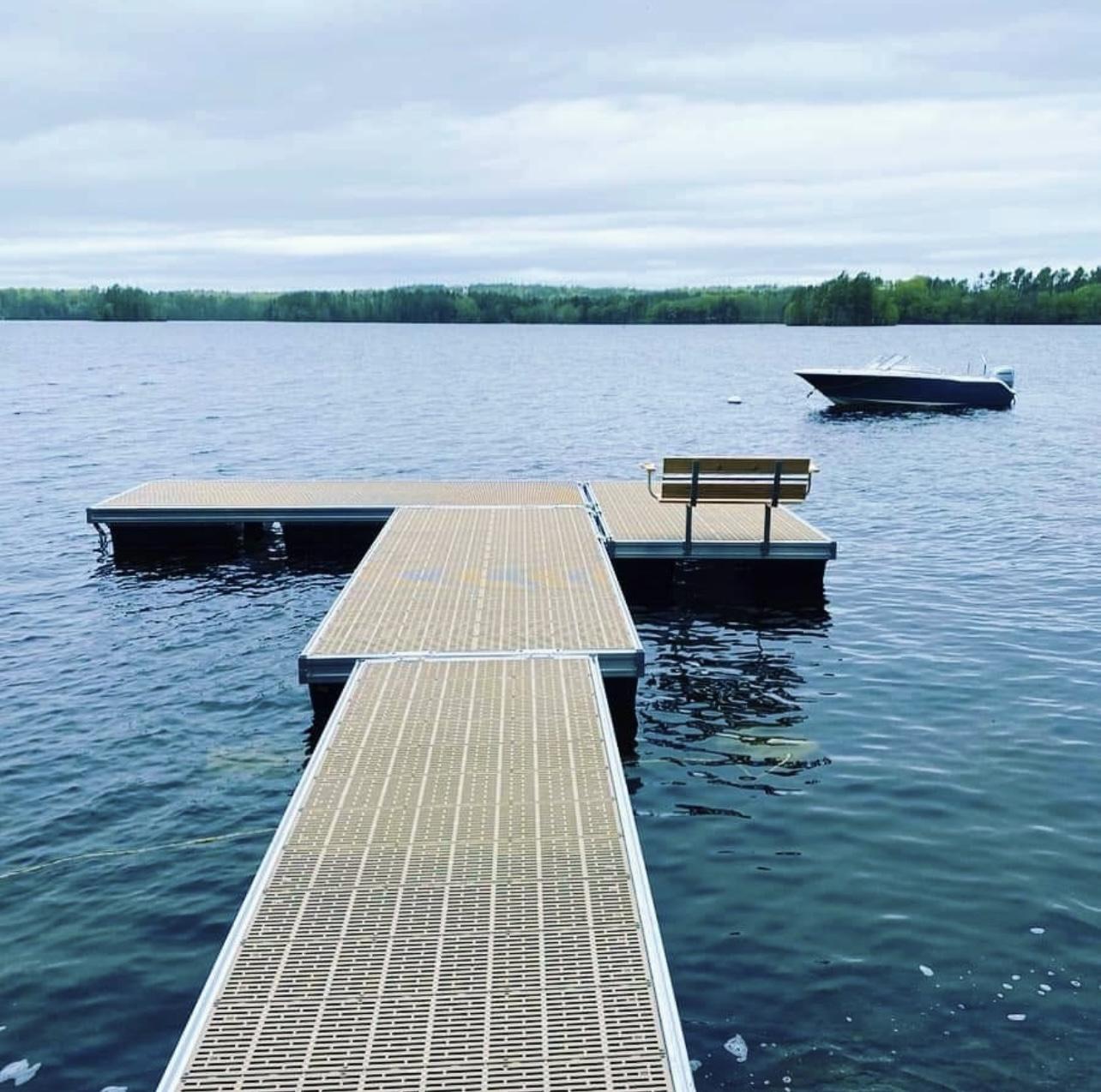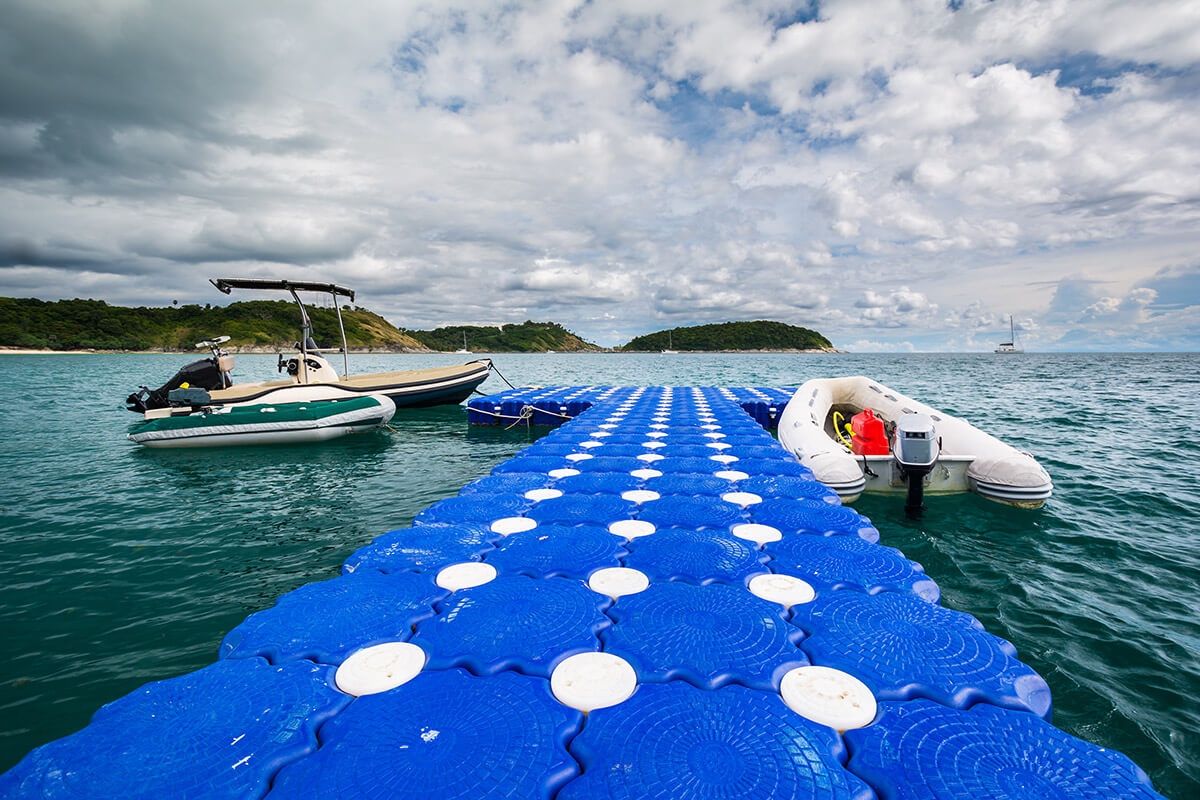Discover the Variety Of Floating Dock Providers Designed to Suit Every Boater's Demands
Discover the Variety Of Floating Dock Providers Designed to Suit Every Boater's Demands
Blog Article
Upgrade Your Waterside With Resilient Floating Docks
Upgrading your waterside with long lasting floating docks can substantially enhance both performance and aesthetics, offering a flexible remedy for various water activities. With a variety of materials offered, consisting of low-maintenance alternatives and conventional wood, selecting the best dock can match your individual design and satisfy sensible demands.
Advantages of Floating Docks
Floating docks offer a plethora of advantages that boost their charm for various maritime applications. Unlike traditional set docks, floating docks surge and autumn with the tide, making sure consistent access for boats and boat regardless of environmental problems.
Additionally, floating docks are less complicated to move and set up, providing versatility for seasonal or short-term use. Their modular style permits modification to fit particular demands, whether for personal marinas, residential watersides, or business applications.
Furthermore, floating docks create very little disruption to the marine environment, protecting neighborhood communities and minimizing the possibility of disintegration. They additionally provide improved safety and security and security for users, as their buoyant nature provides a more forgiving surface than stiff frameworks.
In addition, floating docks can help with a diverse variety of tasks, such as fishing, swimming, and leisure boating, making them a useful asset for waterfront growth. Their flexibility and practicality make floating docks a preferred option for a variety of maritime tasks.
Selecting the Right Products
Picking appropriate materials for floating docks is crucial to their longevity, performance, and overall performance. When choosing materials, think about variables such as environmental direct exposure, upkeep requirements, and architectural integrity. Usual materials consist of wood, plastic, aluminum, and composite options, each offering distinctive benefits and negative aspects.
Wood, while cosmetically pleasing, requires regular upkeep to prevent rot and degeneration. Pressure-treated timber can improve toughness, however it may still give in to water damage with time. Plastic drifts, usually made from high-density polyethylene, are immune to deterioration and need minimal maintenance, making them an eye-catching option for low-maintenance applications.
Aluminum is another sensible alternative, known for its toughness and light-weight properties. It is immune to rust and can hold up against rough weather condition conditions, although it might be much more expensive than various other materials. Composite products incorporate the most effective attributes of wood and plastic, using a resilient and low-maintenance alternative that mimics the look of wood without the linked drawbacks.
Inevitably, the option of product need to straighten with the meant usage, environmental factors to consider, and spending plan restrictions, guaranteeing a useful and long lasting floating dock that satisfies your specific requirements.
Installment Process Summary
The effective installation of a drifting dock depends on cautious preparation and execution, guaranteeing that it runs efficiently in its designated setting. The primary step involves assessing site problems, including water depth, shoreline attributes, and dominating weather patterns, which will educate the dock design and anchoring system.
Complying with the site analysis, the following stage is to prepare the floating dock components. This includes setting up the structure, protecting floats, and affixing any type of essential hardware. It is essential to guarantee that all connections are waterproof and robust to withstand marine problems.
As soon as the dock is set up, the installation process commences with positioning the dock in the water. This can involve a crane or other lifting equipment, especially for larger structures. Proper positioning is important for functionality and safety.

Maintenance Tips for Durability
Regular upkeep is important for making certain the longevity and optimum performance of a drifting dock. To achieve this, begin you can find out more with routine assessments a minimum of two times a year, focusing on the integrity of the dock's structure, consisting of the flotation gadgets and attaching hardware. Look for signs of damages, wear, or corrosion, and resolve any problems promptly to stop more deterioration.
Cleaning up is an additional crucial element of upkeep. Eliminate particles, algae, and barnacles from the dock's surface area to prevent slippery problems and keep visual allure. Use a soft brush and a moderate cleaning agent to stay clear of harming the dock's products.
Additionally, guarantee that the dock is appropriately secured and safeguarded to hold up against seasonal changes in water levels and weather conditions. Inspect the anchoring system for stability and make adjustments as required.
Enhancing Your Outdoor Aesthetic
To create a visually attractive outside area, integrating a floating dock can substantially enhance the overall aesthetic of your waterfront building. Floating docks are not only practical however can also act as a striking prime focus that enhances the natural environments - floating dock services. Offered in different materials check my site and designs, these docks can be tailored to match your building's building style and landscape
The addition of decorative components, such as integrated lights or elegant railings, further boosts the dock's visual appeal. Consider making use of natural timber surfaces, which mix effortlessly with the environment, or going with contemporary materials like light weight aluminum or composite decking that supply a smooth, contemporary appearance.
Tactically positioning planters or seating areas on or around the dock can develop inviting spaces that motivate relaxation and satisfaction of beachfront sights. Additionally, including shades and textures that balance with your landscape will certainly produce a natural aesthetic throughout your outdoor location.

Conclusion

Upgrading your beachfront with resilient floating docks can considerably boost both functionality and appearances, providing a flexible remedy for various water activities. Unlike typical set docks, floating docks increase and loss with the trend, ensuring constant availability for watercrafts and watercraft regardless of environmental problems.Picking ideal materials for floating docks is important to their durability, efficiency, and total effectiveness.Once this post the dock is put together, the setup procedure starts with placing the dock in the water.In recap, floating docks deal numerous advantages, including versatility to water level adjustments and a range of product options.
Report this page